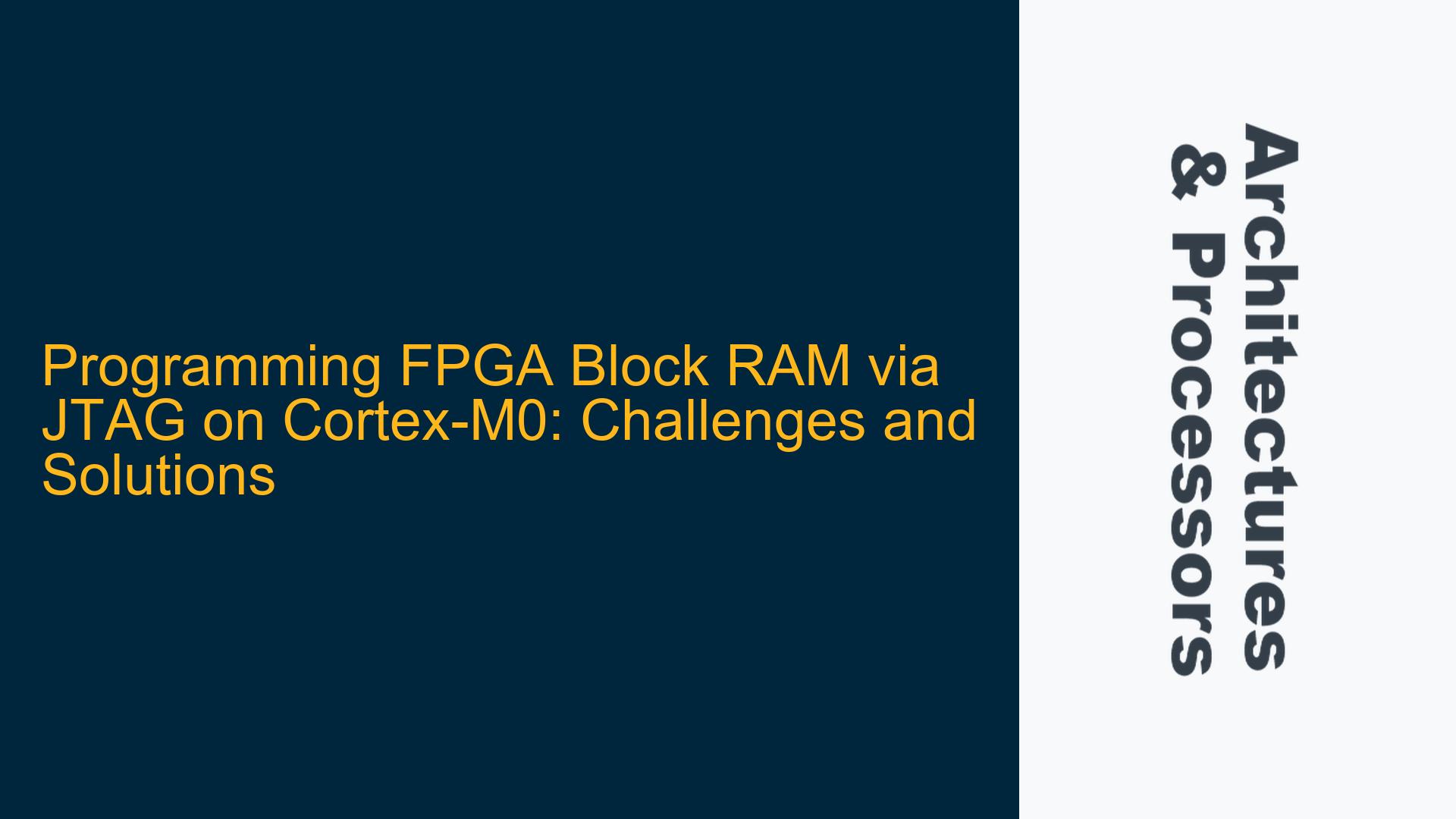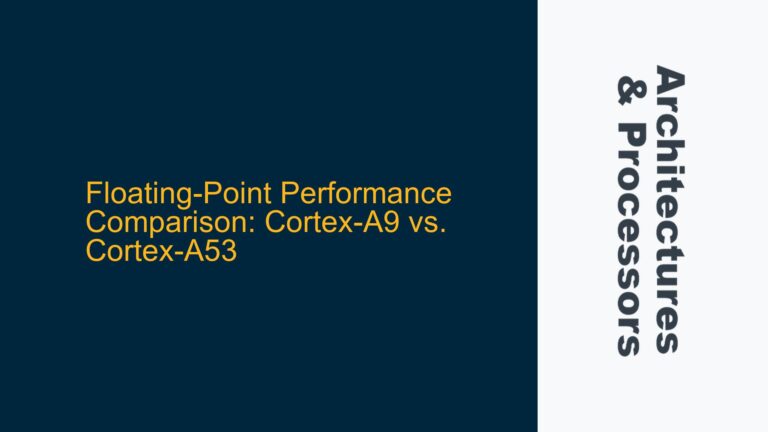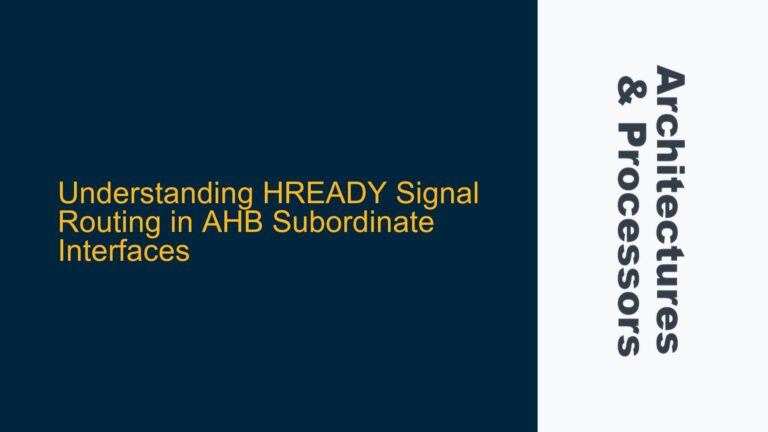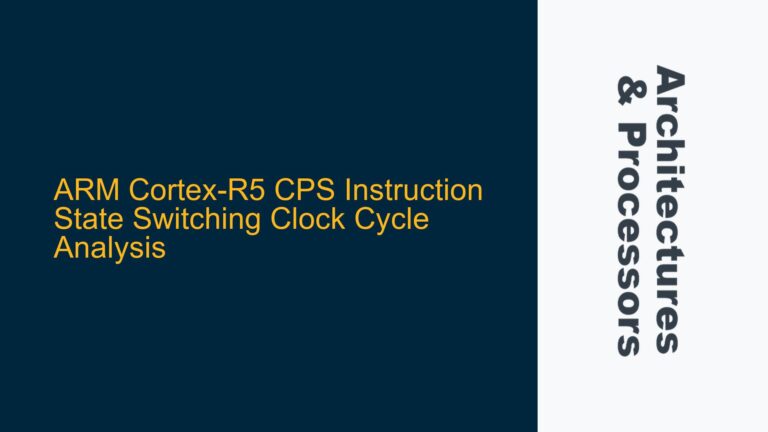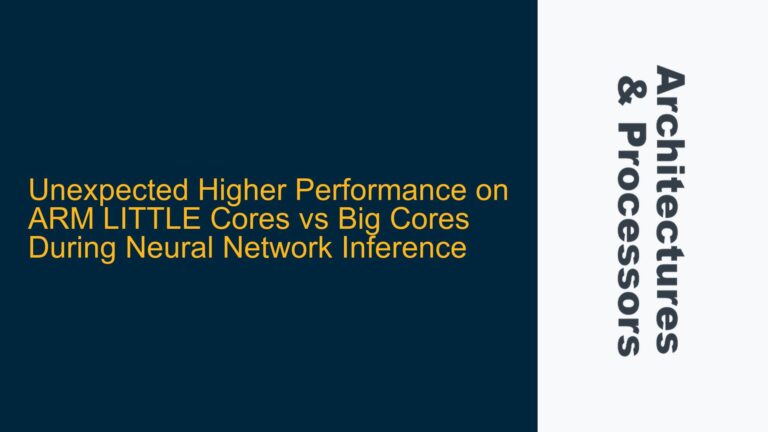FPGA Block RAM Initialization and JTAG Programming on Cortex-M0
The integration of FPGA Block RAM (BRAM) with an ARM Cortex-M0 processor presents a unique set of challenges, particularly when attempting to program the BRAM at runtime using JTAG. The BRAM is mapped to the memory address 0x00000000, acting as on-chip memory for the Cortex-M0. The goal is to initialize the BRAM to zero after FPGA synthesis and then program it dynamically during runtime, akin to flash programming. This process requires a deep understanding of both the FPGA fabric and the Cortex-M0’s memory interface, as well as the JTAG protocol’s capabilities.
The primary issue revolves around whether the JTAG interface, which is typically used for debugging the Cortex-M0, can also be leveraged to program the BRAM. The BRAM is interfaced with the Cortex-M0 via the AHB bus using a custom wrapper file (cmsdk_ahb_to_flash32.v). This wrapper file is designed to facilitate memory read and write operations, but its compatibility with JTAG-based programming is unclear. The JTAG interface, while powerful, is primarily intended for debugging and may not natively support direct memory programming without additional hardware or software modifications.
The complexity arises from the need to ensure that the JTAG interface can access the BRAM through the AHB bus. The AHB bus is a high-performance system bus that connects the Cortex-M0 to various peripherals, including memory. However, the JTAG interface typically operates independently of the AHB bus, raising questions about how to bridge these two domains effectively. Furthermore, the FPGA fabric itself must support JTAG-based memory access, which is not a given and depends heavily on the specific FPGA manufacturer and model.
JTAG-AHB Bridge Limitations and FPGA Manufacturer-Specific Constraints
One of the key challenges in programming the BRAM via JTAG is the lack of a direct JTAG-to-AHB bridge in the standard Cortex-M0 architecture. The JTAG interface is designed for low-level debugging and does not inherently provide the necessary mechanisms to interact with the AHB bus. This limitation means that additional hardware or software layers are required to facilitate communication between JTAG and the AHB bus.
The cmsdk_ahb_to_flash32.v wrapper file is a critical component in this setup, as it provides the interface between the AHB bus and the BRAM. However, this wrapper file is not designed to handle JTAG-based programming directly. Instead, it assumes that memory operations will be initiated by the Cortex-M0 processor itself. To enable JTAG-based programming, the wrapper file would need to be modified or extended to include a JTAG-to-AHB bridge. This bridge would translate JTAG commands into AHB transactions, allowing the JTAG interface to read from and write to the BRAM.
Another significant factor is the FPGA manufacturer’s support for JTAG-based memory access. Different FPGA vendors provide varying levels of support for JTAG programming, and some may require proprietary tools or additional IP cores to enable this functionality. For example, Xilinx FPGAs offer the Virtual Input/Output (VIO) and Integrated Logic Analyzer (ILA) cores, which can be used to interact with internal memory via JTAG. However, these tools are not universally available across all FPGA platforms, and their implementation can be complex.
In the case of the Numato Mimas V2 Spartan-6 FPGA Development Board and the Opal Kelly XEM6010, the specific capabilities of these boards must be carefully evaluated. The Spartan-6 FPGA, for instance, supports JTAG-based configuration and debugging, but its ability to program internal BRAM via JTAG is not well-documented. Similarly, the Opal Kelly XEM6010 provides a high-speed USB interface for FPGA configuration and communication, but its compatibility with JTAG-based BRAM programming is unclear.
Implementing a JTAG-to-AHB Bridge and FPGA-Specific Solutions
To enable JTAG-based programming of the BRAM, a JTAG-to-AHB bridge must be implemented. This bridge can be realized either in hardware or software, depending on the specific requirements and constraints of the system. In hardware, the bridge would involve adding a custom IP core to the FPGA design that translates JTAG commands into AHB transactions. This IP core would need to be integrated with the existing cmsdk_ahb_to_flash32.v wrapper file to ensure seamless communication between the JTAG interface and the BRAM.
In software, the bridge could be implemented as part of the JTAG debugger software. This approach would require modifying the debugger to recognize and handle AHB transactions, effectively extending its functionality to support memory programming. However, this solution is highly dependent on the capabilities of the JTAG debugger and may not be feasible with all tools.
For FPGA-specific solutions, it is essential to consult the documentation and support resources provided by the FPGA manufacturer. For example, Xilinx offers the ChipScope Pro tool, which can be used to interact with internal FPGA memory via JTAG. Similarly, Altera (now Intel) provides the SignalTap II Logic Analyzer, which offers similar functionality. These tools can be used to program the BRAM at runtime, but they require careful configuration and integration with the FPGA design.
In the case of the Numato Mimas V2 and Opal Kelly XEM6010, the first step is to determine whether these boards support JTAG-based memory access. This can be done by reviewing the board’s documentation and consulting with the manufacturer’s support team. If JTAG-based memory access is supported, the next step is to configure the FPGA design to enable this functionality. This may involve adding a JTAG-to-AHB bridge IP core or modifying the existing cmsdk_ahb_to_flash32.v wrapper file.
Once the JTAG-to-AHB bridge is in place, the BRAM can be programmed at runtime using standard JTAG commands. This process typically involves writing a sequence of commands to the JTAG interface, which are then translated into AHB transactions by the bridge. These transactions are used to write data to the BRAM, effectively programming it with the desired values.
In conclusion, programming FPGA Block RAM via JTAG on a Cortex-M0 processor is a complex but achievable task. It requires a deep understanding of both the FPGA fabric and the Cortex-M0’s memory interface, as well as the specific capabilities of the JTAG interface. By implementing a JTAG-to-AHB bridge and leveraging FPGA-specific tools, it is possible to program the BRAM at runtime, enabling dynamic memory initialization and configuration. However, this process is highly dependent on the specific FPGA platform and may require significant customization and integration efforts.
